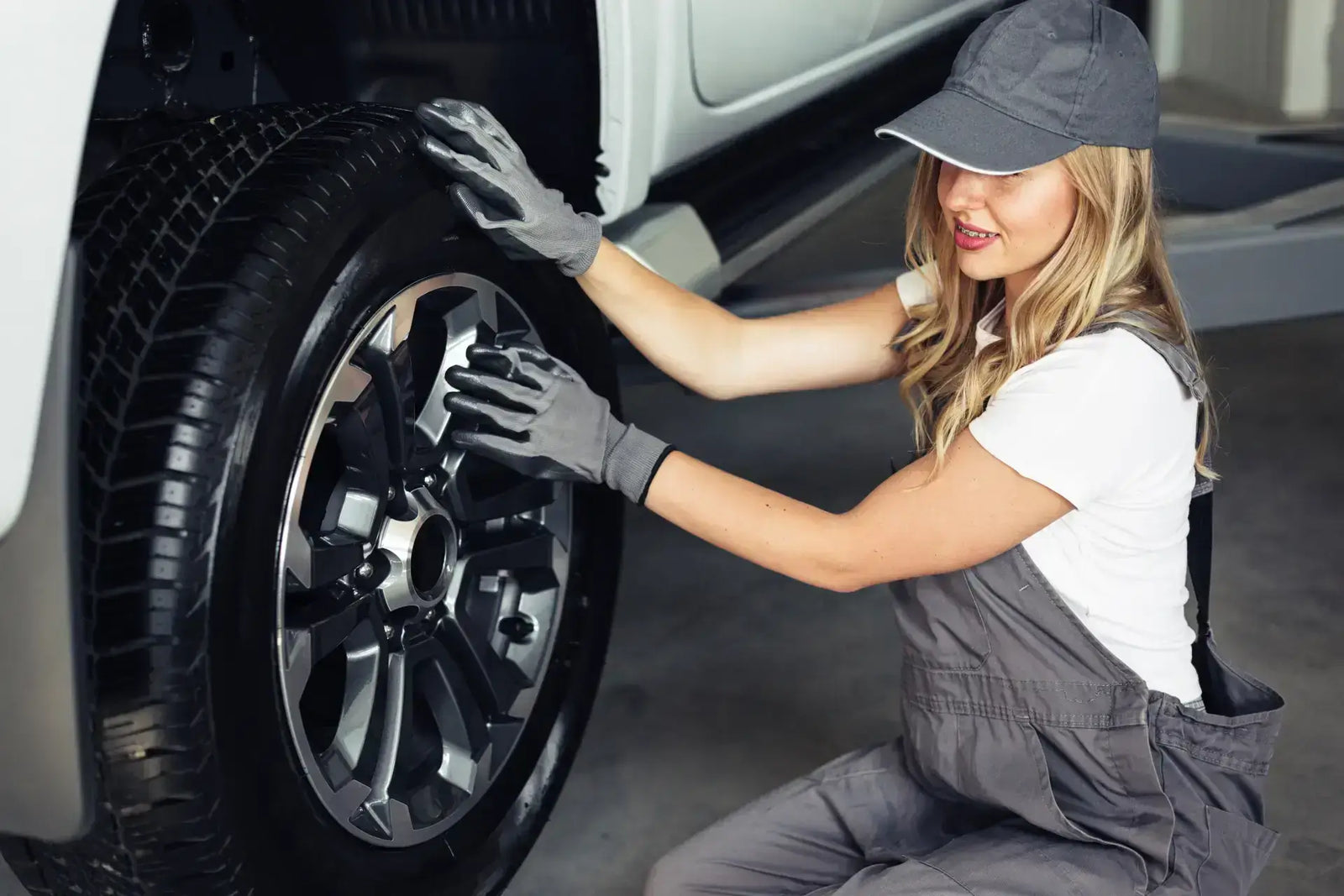Shopping
dot
Style
dot
Trending
It’s the tire’s tread that provides the traction you rely on for a safe and smooth drive. As the miles add up, it wears down. Enough wear and you have bald tires.
Bald tires are risky to drive on for two reasons - they’re more susceptible to punctures, and they no longer have adequate tread depth to channel water from under the tread. Which means that, when it rains or snows you may lose traction (and control over your vehicle). For these reasons, bald tires are extremely risky to drive on and should be replaced.
Learn what bald tires are, causes, signs, and the risks associated with driving on them.
WHAT ARE BALD TIRES AND WHY DO THEY HAPPEN?
Simply put, balding tires are tires that have minimal or no tread left.
A tire's tread wears down with each mile driven, and there are various factors that affect how quickly it wears. Knowledgeable drivers are proactive in tire care and can prevent the risk of driving on bald tires.
Underinflated and Overloaded Tires
It’s the air inside the tire that carries the weight of the vehicle. A tire without enough air to carry the load is considered “under-inflated”. This is bad because it causes a lot more stress on the tire than it was designed for. A tire carrying a load greater than it was designed for is considered “overloaded”. Just like the under-inflated tire, it’s subject to higher stresses than it was engineered for. In both cases, the result is reduced treadwear, and in extreme situations the tire could fail, which people often refer to as a “blowout”.
Unbalanced and Misaligned Tires
Tires and wheels often have areas that are a bit heavy or light. “Balancing” the tire/wheel assembly involves the use of a machine which tells the technician to add weight in specified places to make the tire/wheel’s weight equal all over. If this isn’t done, the tires may not wear evenly, and the driver may feel a vibration at higher speeds.
Alignment is important because car makers design the suspension so that tires will roll properly for stable handling, strong traction and good treadwear. When the suspension gets out of specification it’s described as being “out of alignment”. That means the tires are no longer rolling straight; they’re rolling at an angle instead of straight ahead or are tilted from vertical. This often results in increased treadwear, uneven treadwear, and in some cases, the car “pulling” to the left or right.
Neglected Tire & Vehicle Maintenance
Keeping up with the proper maintenance helps a driver to be more aware of when tires are wearing. Neglecting tire maintenance increases the chance of driving on unaligned, underinflated, or unbalanced tires, which, in the end, may result in driving on bald tires.
SIGNS OF BALD TIRES
Recognizing the signs can help drivers know when their tires are going bald and make them aware of when replacement is needed.
Visible Wear Bars
Once the tread is completely worn, tire wear bars (“Treadwear Indicators” in engineering-speak) become more noticeable. They’re about the width of a pencil, and they run across the base of the tread from side to side. They’re most obvious once the tread depth reaches 2/32”.
If the tread is worn down to the treadwear indicators the tire is no longer safe or legal for use and must be replaced.
Seeing Low Tread
If it appears the tread is heavily worn, you may check it with this simple and effective tread check at home:
Take a penny and insert its edge into a groove in the tire’s tread so it touches the bottom.
The penny should be placed so that Lincoln’s head is inserted into the tread
If the top of Lincoln’s head is fully visible, the tire’s tread depth is at or below 2/32” (the legal minimum) and the tire should be replaced.
Cracks and Bulges
You should perform an overall visual inspection of your tires periodically, especially if you feel or hear anything unusual from them when driving. Look for cracks or cuts deep enough to expose the steel belts or body cords. Also check for unusual bulges in the tread or sidewalls - they could be a sign of internal damage. If you notice something that you’re not sure of, don’t hesitate to take it to a professional to have it checked.
RISKS AND COST OF DRIVING ON BALD TIRES
Driving on bald tires can result in vehicle damage from either tire failure or loss of vehicle control, and either is likely to come with an unwanted repair bill. Prevent unnecessary expenses and risks by replacing bald tires immediately.
Lost Control and Hydroplaning
When it rains, driving on bald tires increases the chances of skidding or hydroplaning. and possible accidents, needed repairs, and hefty insurance costs.
Poor Brakes
When driving, a vehicle’s brakes are trusted to work no matter the speed. But brakes don’t provide traction, tires do. So, when driving on anything other than a perfectly smooth road free of sand, dirt and debris, bald tires compromise your brakes’ ability to stop by providing reduced traction Poor braking efficiency increases the chance of being involved in an accident, plus adds unwanted repair costs.
Punctures
Bald tires are more easily punctured due to the lack of remaining tread. In addition to the possibility of a flat tire, a puncture could cause a blowout, and might even result in a loss of control of your vehicle.
PREVENTION FROM DRIVING ON BALD TIRES
We depend on our tires for our safety when driving; it is vital that they are taken care of properly. Be proactive in replacing tires when they’re considered “bald” - that is, are worn to the 2/32” treadwear indicators. A little attention goes a long way to help you avoid expensive problems, so be sure to check your tires’ tread and keep them properly maintained to help extend their tread life.



